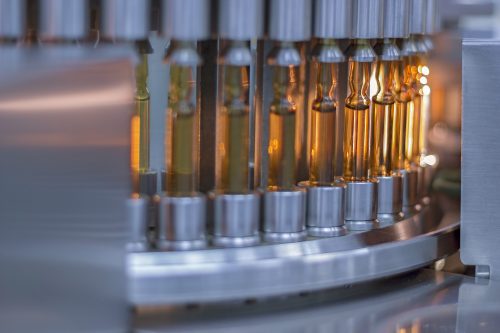Testosterone Cypionate in the UK

Introduction
We are proud to announce that The Men’s Health Clinic is the first clinic in the UK to be granted approval for the importation of Testosterone Cypionate, the preferred testosterone ester in the USA, into the UK. In addition to this, we have also been granted approval for importation of Pregnyl from Europe. This means that from Spring 2019, your testosterone and HCG medications will be available directly from clinic.
Testosterone Cypionate vs Enanthate
We have previously found great success in achieving stable levels and managing potential side effects with Testosterone Enanthate. Compared to Nebido and Sustanon, it has the advantage of a short half-life, which means that most side effects can be managed by simple dose alteration and/or frequency of injection. In fact, it is practically identical in chemical structure to Testosterone Cypionate, which just has an additional carbon atom attached to it making its half-life slightly longer. Until now, Testosterone Cypionate had not been available in the UK, so when guys came across the pond, they had to switch to Testosterone Enanthate. Fortunately, it was a straight swap due to the two chemicals being so similiar. So, if you’d would like to switch from Testosterone Enanthate to Cypionate, the same is true, there is no need to adjust your protocol, you can simply switch ester.
A noticeable difference between Testosterone Cypiontae and Enanthate is the carrier oil. Testosterone Enanthate is dissolved in sesame oil which is very viscous. One downside of having such a high viscosity is that preparation of the injection with Enanthate can be quite time-consuming, which does not lend well to long-term patient compliance and concordance. I am becoming more and more of a proponent of subcutaneous testosterone injections. The subcutaneous route allows for slower absorption compared to the intramuscular route, which in turn leads to more stable levels, decreased aromatisation of testosterone to oestrogen and less possible negative side effects. The high viscosity of the sesame oil in Testosterone Enanthate means that the medication can cause lumps within the skin and subsequent irritation, which some of my patients report as being quite painful. Testosterone Cypionate uses olive oil as its carrier. Olive oil is far more fluid than sesame oil, almost like water, so it’s a preferable choice in administering TRT via the subcutaneous route as it is less likely to congeal and is therefore a more effective delivery system.
We looked to make the switch from Testosterone Enanthate to Cypionate because some of our patients couldn’t tolerate the post injection pain sometimes associated with subcutaneous administration. Another consideration was that Testosterone Enanthate contains the preservative Chlorobutinol, which is a known irritant at high concentrations. It is typically only used at up to a concentration of 0.5% because of its potential irritative effect. The concentration of Chlorobutinol in Testosterone Enanthate is 5%, so it’s hardly surprising there can be adverse reactions to its use.
There is nothing wrong with Testosterone Enanthate, as already mentioned, the two esters are practically identical from a pharmacokinetic persepective. However, in my professional opinion, if Testosterone Cypionate is available, it is a much better choice for Testosterone Replacement Therapy, for all the reasons discussed above.
Other TRT Options in the UK
Sustanon
Sustanon is another commonly used TRT in the UK. However, it’s use has several clear drawbacks. It is a blend of four esters:
- Testosterone Propionate (30mg) – Half-life = ~2 days
- Testosterone Phenylpropionate (60mg) – Half-life = ~4.5 days
- Testosterone Isocaproate (60mg) – Half-life = ~9 days,
- Testosterone Decanoate (100mg) – Half-life = ~15 days
When determining injection frequency for an optimal TRT protocol, it’s important to consider the shortest acting ester which, in this case, is the Propionate ester. The optimal injection frequency, to achieve stable levels and minimise oestrogen spikes, would be every other day injections. Unfortunately, achieving stable androgen levels, even with every other day injections, is difficult due to other potential aggravating factors such as having a low Sex Hormone Binding Globulin level. Patients are still therefore prone to negative oestrogenic side effects such as gynaecomastia, water retention, loss of libido and erectile dysfunction.
It’s also worth noting that the high Benzyl Alcohol content in Sustanon, 100mg/ml compared to 9.45mg/ml in Testosterone Cypionate, means that it’s a common skin irritant. Post injection pain (PIP) is common in patients using Sustanon. Complaints of PIP are often dismissed as a result of implied poor injection technique, but this is far from the case. The high Benzyl Alcohol content means that Sustanon is a poor blend of esters for proposed subcutaneous TRT administration. The resultant localised skin reaction fields as a possible feeding ground for bacteria and subsequent infection. Subcutaneous injections are typically less painful than intramuscular injections, something to consider when signing up to a lifelong therapy.
Sustanon is made with arachis (peanut) oil, so it’s important to counsel patients prior to commencing therapy in case they have a peanut or soya allergy. If they do, they should not use this product. Heaven forbid someone could have an anaphylactic reaction and possibly die if this is not considered prior to commencing treatment.
Testosterone Undeconate
Nebido (Testosterone Undeconate) is the UK licenced TRT in the UK. It contains the long undecanoic acid ester. It’s half-life is approximately 90 days, with stability being achieved in approximately 450 days. In my opinion, this lengthy period to achieve stability is unacceptable, especially when there are shorting acting esters available that will achieve stable levels in a significantly shorter time. It is usually injected as a single 1000mg/4ml bolus every 10-12 weeks. The injection is often painful, not only due to the sheer volume of fluid being injected, but also due to the high viscosity of the castor oil that the testosterone is dissolved in. We did use Nebido when we first opened the clinic, however after universal reports of peaks and troughs and side-effects, it was a logical step to look to an alternative TRT choice.
Rob’s Final Thought
I have been prescribing TRT for over three years now and the process has evolved to the realisation that a fluid, short-acting ester is the optimal choice for our patients. This will improve concordance and compliance with proposed subcutaneous protocols, which, in turn, will improve outcomes in patient care.
Dr Robert Stevens MBChB MRCGP Dip.FIPT


